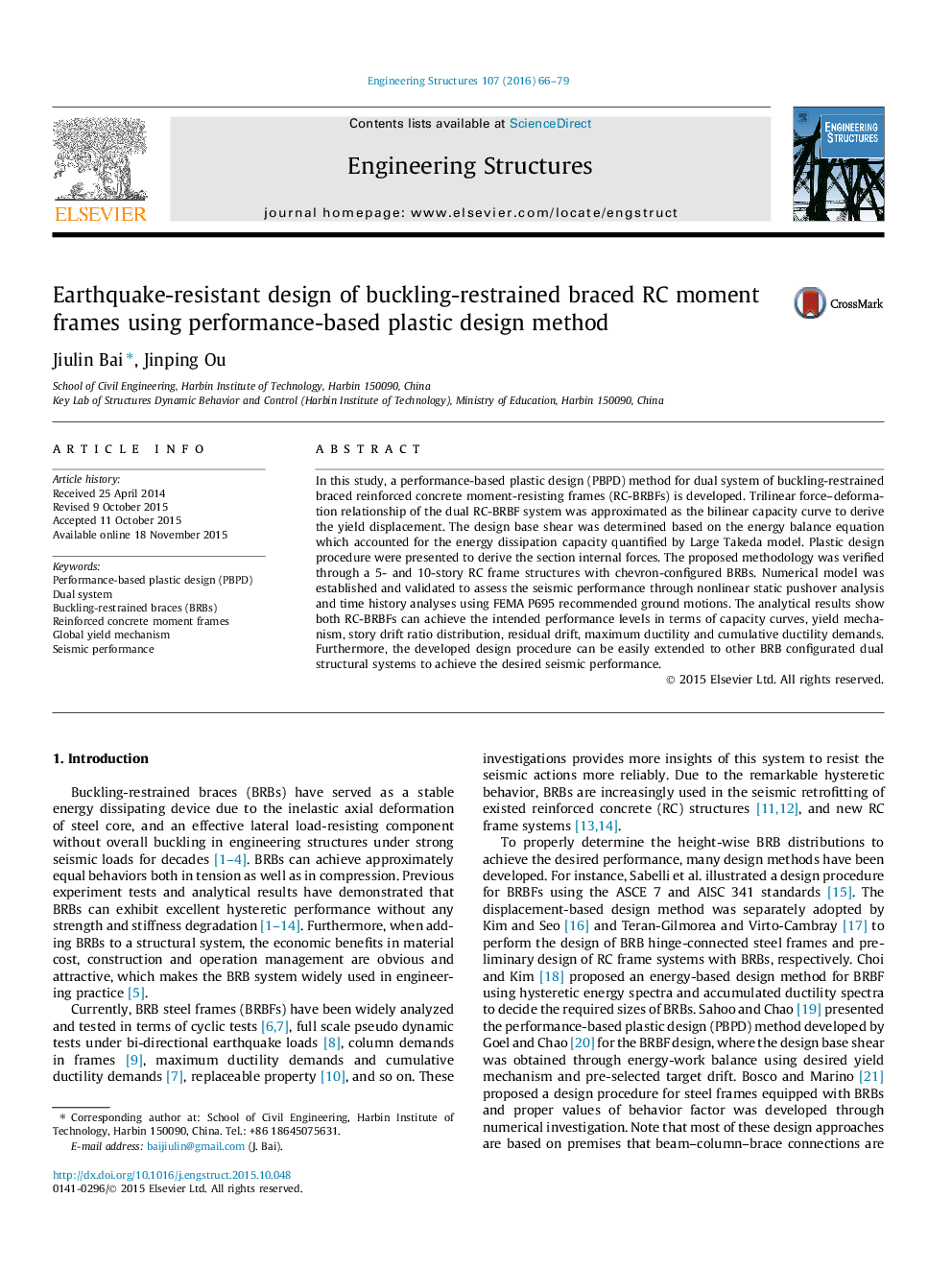| Article ID | Journal | Published Year | Pages | File Type |
|---|---|---|---|---|
| 265962 | Engineering Structures | 2016 | 14 Pages |
•Bilinear capacity curve of dual RC-BRBF systems were derived.•Modified energy balance equation was used to reduce the hysteretic energy.•Plastic design procedures were developed to RC frame system and BRB system.•Effectiveness and robustness of the method were validated.
In this study, a performance-based plastic design (PBPD) method for dual system of buckling-restrained braced reinforced concrete moment-resisting frames (RC-BRBFs) is developed. Trilinear force–deformation relationship of the dual RC-BRBF system was approximated as the bilinear capacity curve to derive the yield displacement. The design base shear was determined based on the energy balance equation which accounted for the energy dissipation capacity quantified by Large Takeda model. Plastic design procedure were presented to derive the section internal forces. The proposed methodology was verified through a 5- and 10-story RC frame structures with chevron-configured BRBs. Numerical model was established and validated to assess the seismic performance through nonlinear static pushover analysis and time history analyses using FEMA P695 recommended ground motions. The analytical results show both RC-BRBFs can achieve the intended performance levels in terms of capacity curves, yield mechanism, story drift ratio distribution, residual drift, maximum ductility and cumulative ductility demands. Furthermore, the developed design procedure can be easily extended to other BRB configurated dual structural systems to achieve the desired seismic performance.
